Understanding what makes a good click-through rateThe percentage of users who click on an ad after seeing it. is crucial to running successful Google Ads campaigns.
CTR, or click-through rate, is the percentage of users who click on your ad after viewing it.
A strong CTR is indicative not only of effective ad messaging but also crucial in helping improve your Quality ScoreA metric used by Google Ads to measure the relevance and quality of ads, keywords, and landing pages., lowering costs, and granting better ad placements.
But what exactly is a good CTR, and how can you ensure your campaigns achieve it?
In this article, we’ll delve into the factors that influence CTR and provide actionable tips to help you optimize your ads.
- Understanding Click-Through Rate (CTR) in Google Ads
- Factors That Affect a Good CTR
- What is Considered a Good CTR in Different Campaign Types?
- How to Improve CTR in Google Ads
- Common Mistakes That Lower CTR and How to Avoid Them
- Mastering the Art of Achieving a Good CTR in Google Ads
- Frequently Asked Questions About a Good CTR in Google Ads
Understanding Click-Through Rate (CTR) in Google Ads
Click-Through Rate, or CTR, is the performance metric that calculates the number of clicks your ad receives divided by the number of times it is shown (impressionsThe number of times an ad is shown to users.), expressed as a percentage.
In Google Ads, CTR is more than just a number; it’s a reflection of how well your ad resonates with your target audience.
A high CTR means your ads are compelling and relevant, while a low CTR may indicate that optimization is in order.

Illustration of a marketing expert evaluating click-through rate metrics and their importance in Google Ads.
What is CTR and Why is it Important?
CTR provides advertisers with insights into how effectively their ads capture attention and drive engagement.
A good CTR can significantly impact your campaign’s success by:
- Improving your ad’s Quality Score, which can lower your cost per click (CPC).
- Increasing the likelihood of higher ad placements on the search results page.
- Enhancing overall campaign performance by reaching more potential customers.
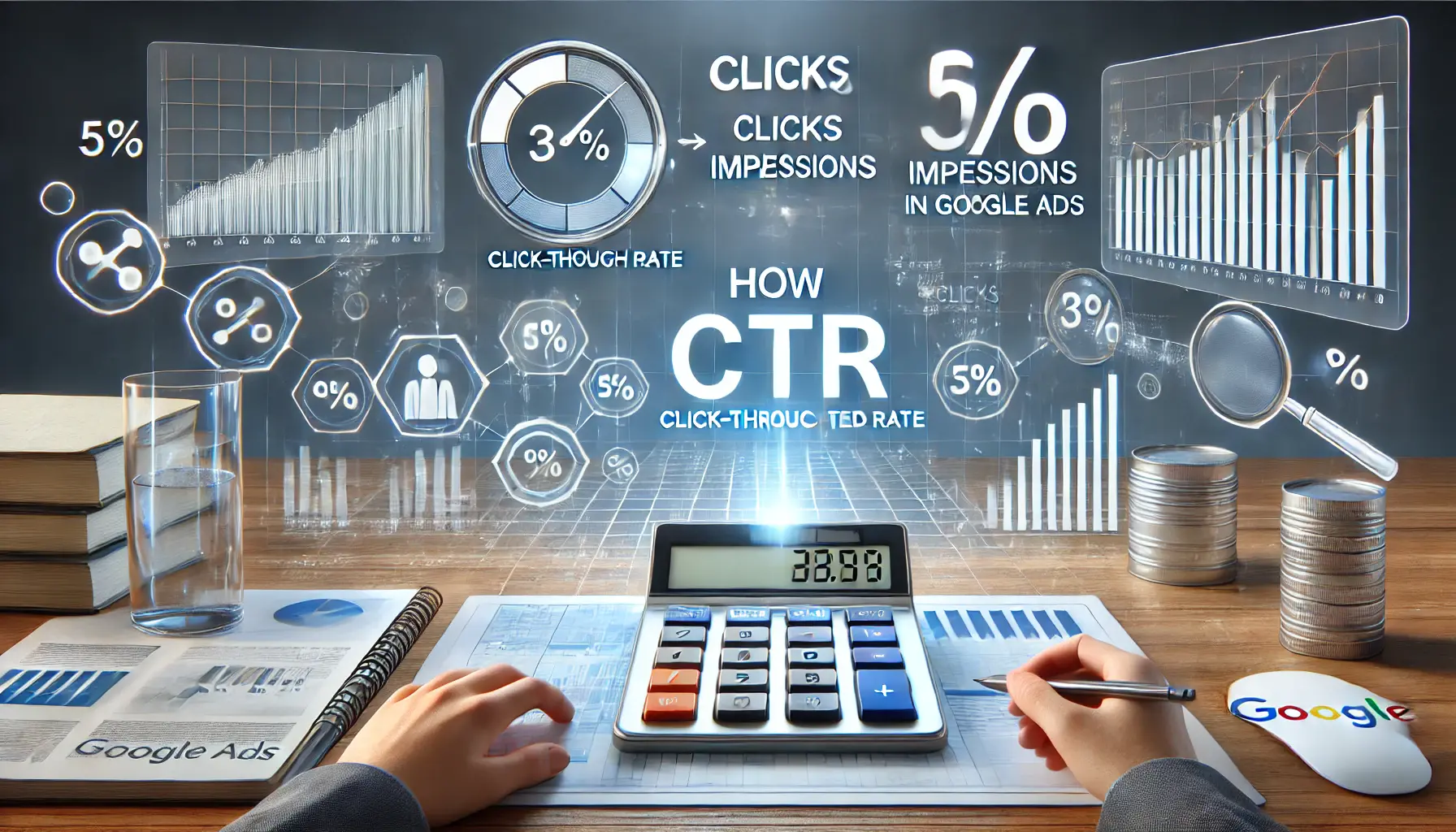
A clear and modern visualization of how click-through rate (CTR) is calculated in Google Ads.
How CTR is Calculated in Google Ads
Calculating CTR is simple: divide the number of clicks your ad receives by the number of impressions it generates, then multiply the result by 100 to get a percentage.
For example, if your ad has 100 clicks and 1,000 impressions, your CTR would be 10%.
- CTR formula: (Clicks ÷ Impressions) × 100
- This calculation helps you understand how engaging your ad is compared to its reach.
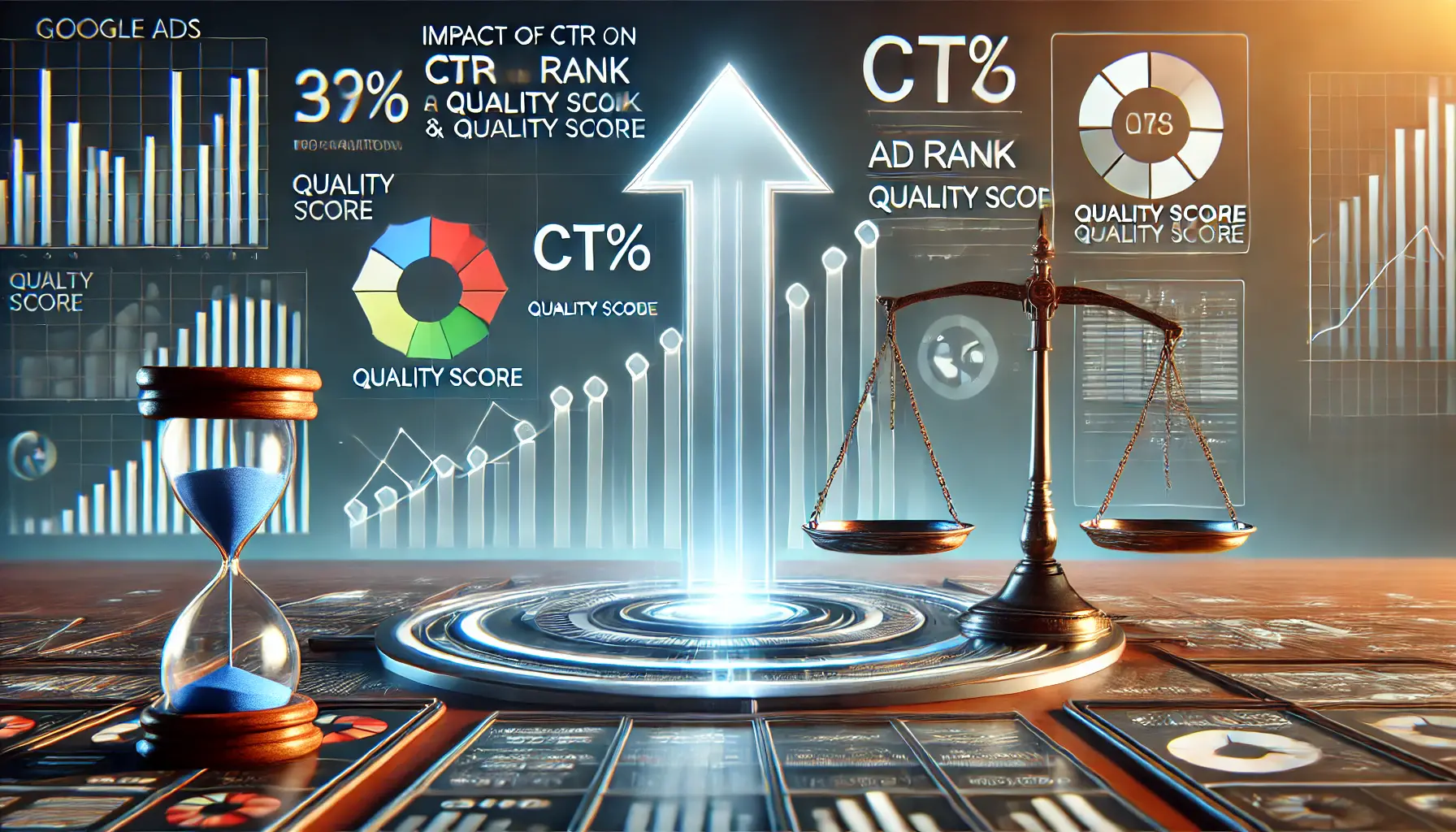
Visualization of the relationship between click-through rate (CTR), Ad Rank, and Quality Score in Google Ads.
Impact of CTR on Ad Rank and Quality Score
CTR directly impacts your Ad RankA value used by Google to determine an ad's position on the search results page., which determines your ad’s position on the search results page.
Typically, with an increased CTR, the Ad Rank goes up, signaling to Google that the ad is highly relevant and useful for the user.
Additionally, CTR is one of the most important components making up Quality Score—a metric Google uses to estimate how well your ads, keywords, and landing page match each other in relevance and quality.
- High CTR = Higher Ad Rank = Better visibility.
- Better Quality Score = Lower CPC and more efficient budget utilization.
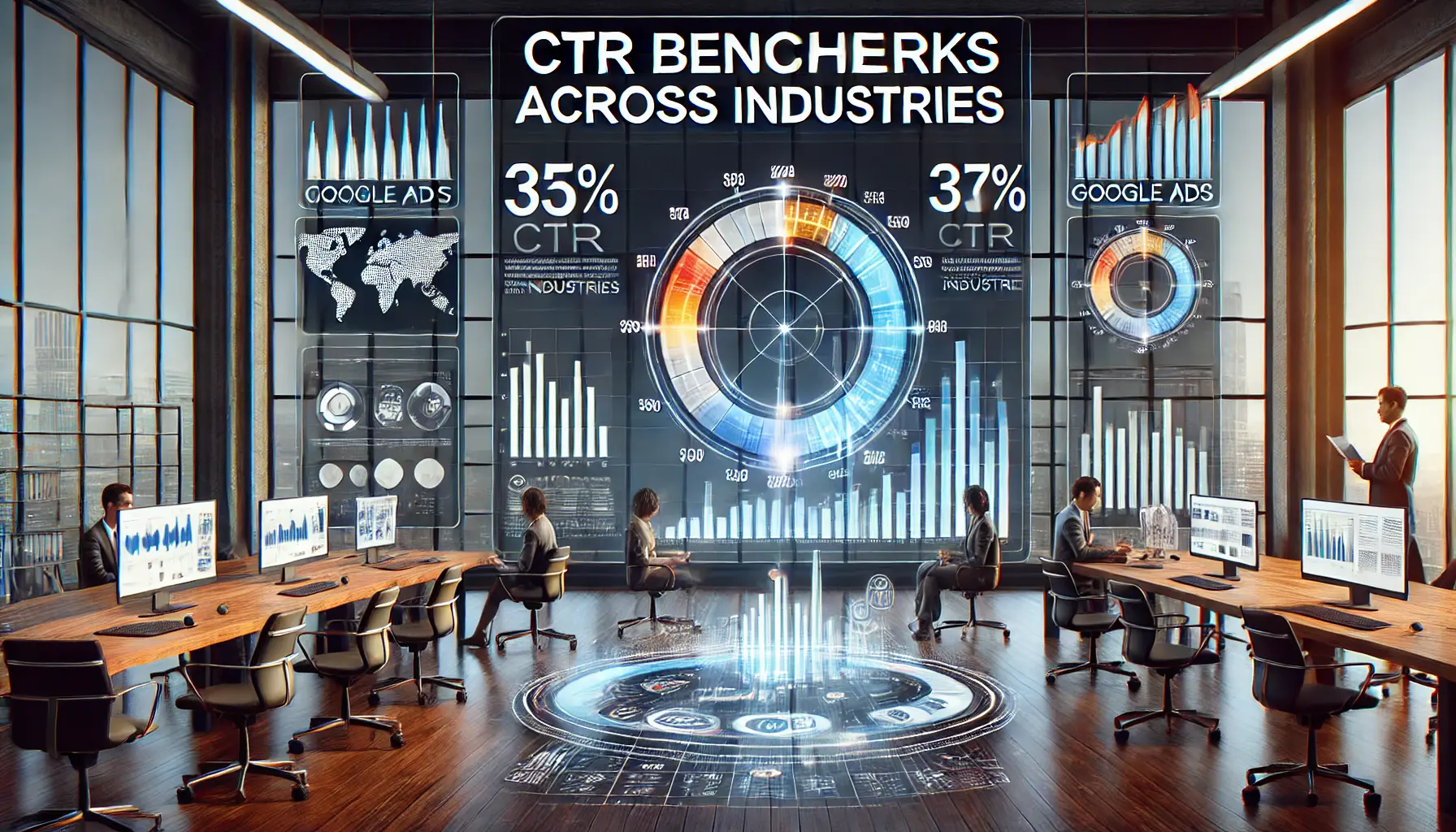
Comparative visualization of CTR benchmarks across various industries in Google Ads campaigns.
CTR Benchmarks Across Industries
What constitutes a good CTR can vary depending on the industry and type of campaign.
For example, search campaigns often have higher CTRs compared to display campaigns because they target users actively searching for specific information.
Here are some general benchmarks:
- Search Campaigns: 2-5% CTR is considered good.
- Display Campaigns: 0.5-1% CTR is the average.
- Shopping Ads and Video Campaigns: CTR benchmarks vary based on the audience’s intent and engagement.
Understanding these benchmarks will help you set realistic expectations and goals.
Remember, even a small increase in CTR can bring significant gains to ad performance and ROI.
CTR is a key performance metric that reflects how well your ad resonates with its audience. Higher CTR means more engagement and relevance, leading to better Quality Scores and ad placements.
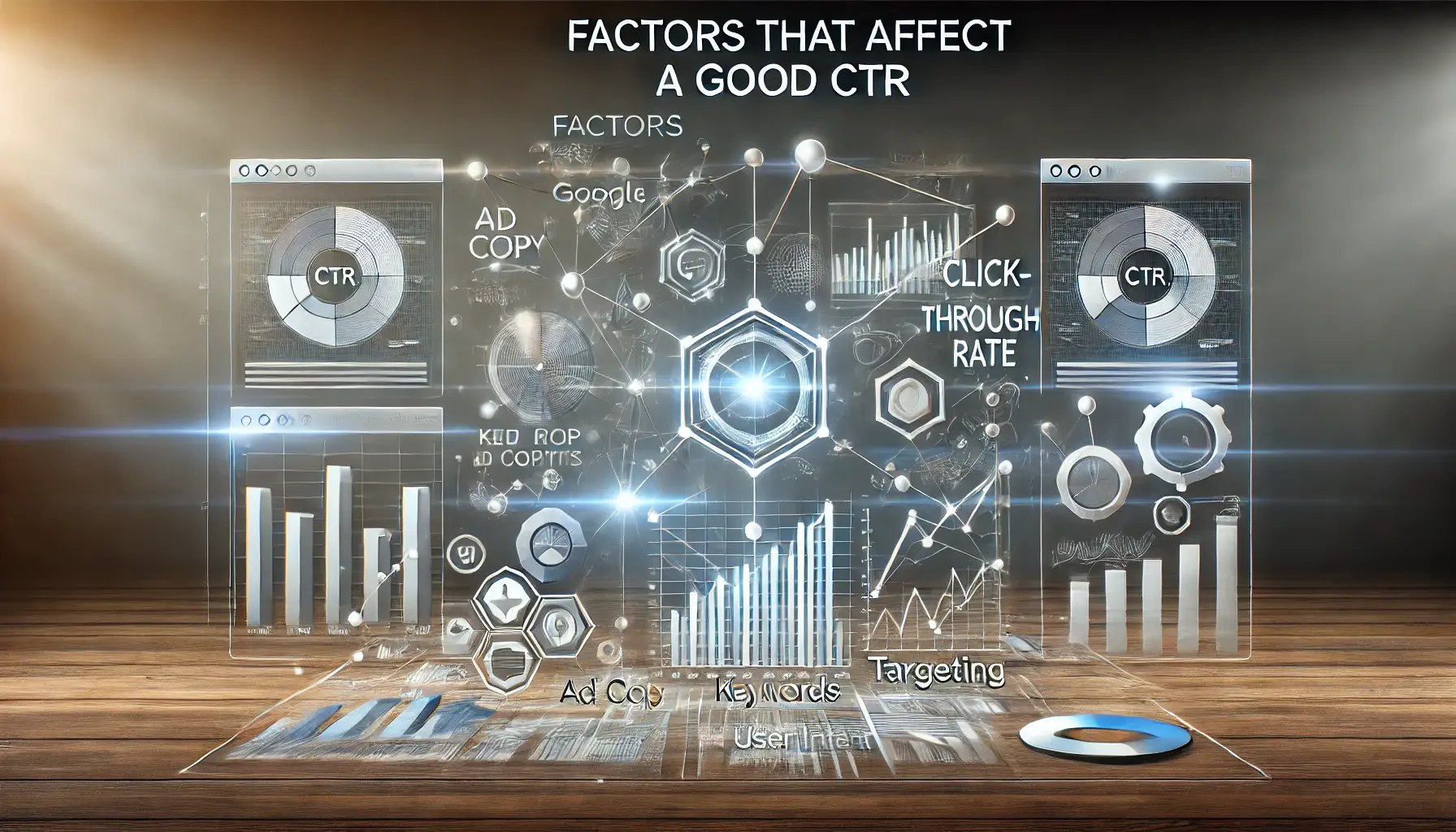
Visualization of the interconnected factors that impact click-through rate (CTR) in Google Ads campaigns.
Factors That Affect a Good CTR
A good CTR in Google Ads is not just about creating an appealing ad; it’s about understanding and optimizing all the different factors that come into play when a user interacts with your ad.
Everything from keyword selection to ad relevance plays a role in how effective your campaigns can be.
Let’s dive into the key factors at play in determining a good CTR and how you can use them to improve your campaigns.
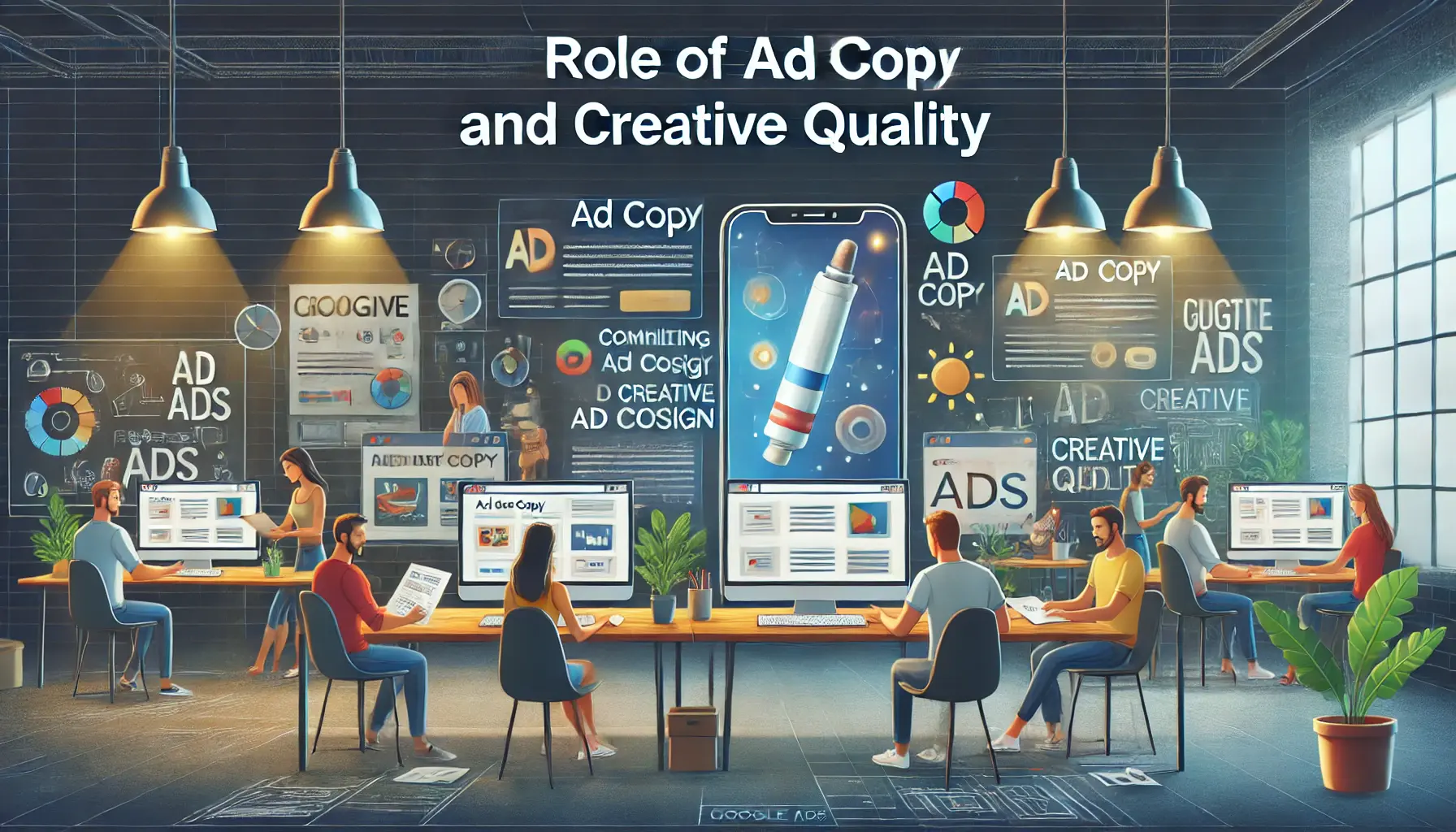
Illustration of a creative process emphasizing the importance of ad copy and design quality in digital advertising.
Role of Ad Copy and Creative Quality
The quality of your ad copy and creative content is one of the most significant determinants of CTR.
Your ad needs to grab attention and clearly communicate the value you’re offering.
Ads with concise, engaging headlines and a strong call-to-action (CTA) tend to perform better.
Including keywords in the ad copy ensures relevance and encourages clicks.
- Use action-oriented language, such as “Discover,” “Get,” or “Try.”
- Highlight unique selling points or special offers.
- Ensure your visuals (if applicable) are high quality and aligned with your messaging.

Visualization of keyword strategies and match type analysis in Google Ads campaigns.
Keyword Relevance and Match Types
Using proper keywords and optimizing match types directly impact your CTR.
Keywords should relate precisely to the ad copy and user intent.
Broad match keywords can capture a wide audience but may hurt CTR if they are not targeted precisely.
On the other hand, exact matchA keyword match type where ads appear only for exact keyword searches or very close variations. keywords ensure maximum relevance but may limit your reach.
- Conduct keyword research using keyword tools to identify high-performing, relevant terms for your ad groups.
- Use negative keywords to filter out irrelevant traffic.
- Experiment with different match types to find the right balance between reach and relevance.
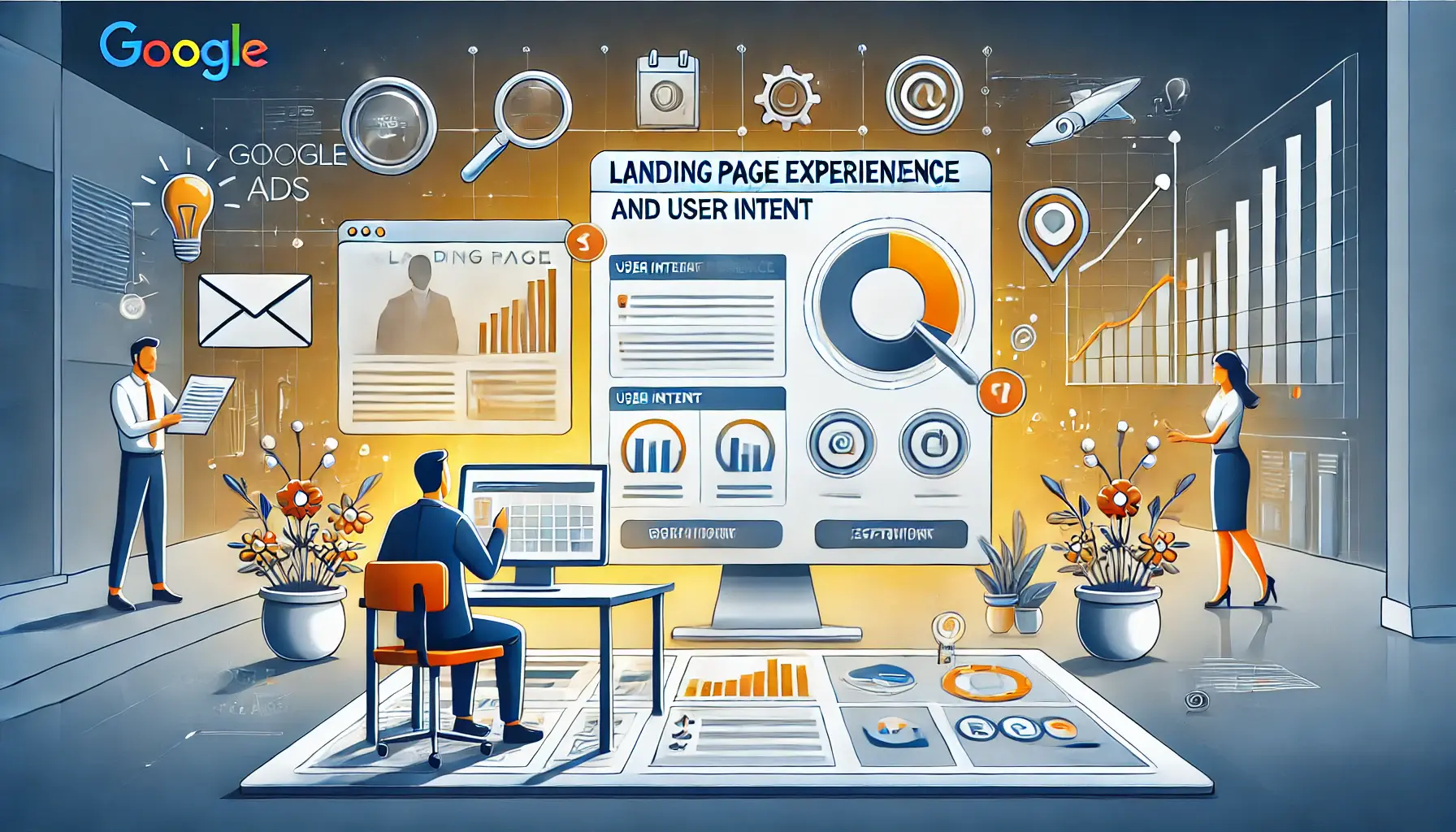
Illustration of landing page optimization and user intent analysis for enhanced engagement in Google Ads.
Landing Page Experience and User Intent
Your landing page plays an indirect yet important role in your CTR.
While users will not see it before clicking, a mismatch between the ad and the landing page content can lower your CTR over time.
A seamless and relevant landing page experience helps users trust your ad and increases their likelihood of clicking.
- Ensure the landing page delivers on the promises made in the ad.
- Optimize the page for speed and responsiveness, especially on mobile.
- Keep the headlines and CTAs clear on the landing page to maintain continuity.

Visualization of strategic ad placement and audience targeting settings in Google Ads campaigns.
Ad Placement and Targeting Settings
Where and to whom your ad is shown has a significant influence on CTR.
Ads in premium positions, such as the top of the search results, usually receive higher CTRs.
Additionally, targeting the right audience based on demographics, location, and interests ensures your ads reach users most likely to engage.
- Target high-intent keywords to secure better placements.
- Segment your audience to refine your targeting.
- Employ automated bidding strategies to optimize for CTR.
By focusing on these factors, you can significantly improve your CTR, making your Google Ads campaign both viable and effective.
Keep experimenting, refine your strategies, and stay updated to maintain a competitive edge in advertising.
CTR depends on factors like ad copy quality, keyword relevance, and targeting. By optimizing these, advertisers can significantly boost performance.
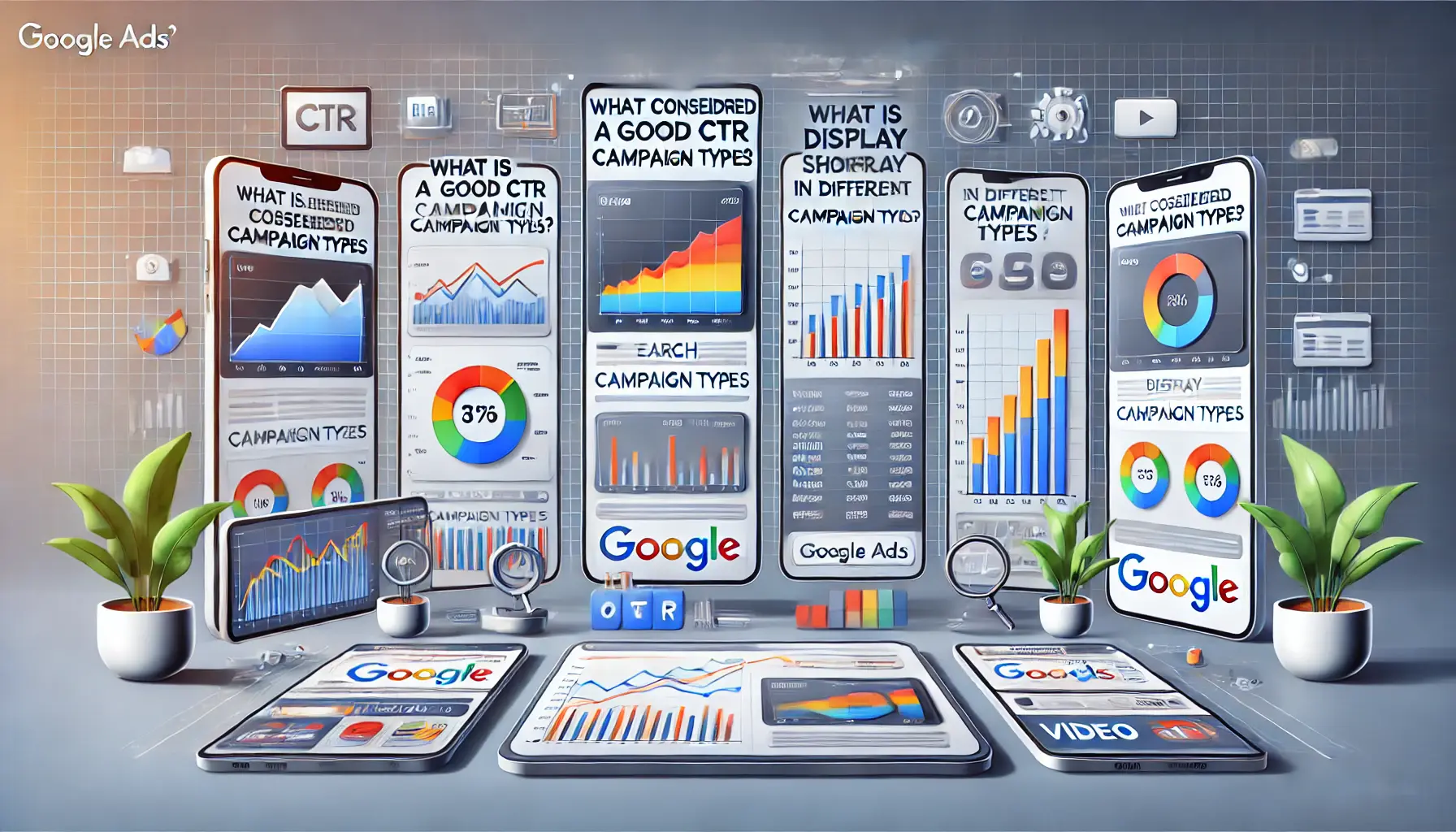
Illustration of CTR benchmarks for different Google Ads campaign types, highlighting variations in performance metrics.
What is Considered a Good CTR in Different Campaign Types?
Defining a good CTR in Google Ads depends on the type of campaign you are running.
CTR benchmarks vary significantly across campaign types due to differences in audience intent, ad placement, and engagement levels.
Understanding these benchmarks helps you set realistic expectations and optimize your campaigns accordingly.
Let’s explore what constitutes a good CTR across different Google Ads campaign types.

Visualization of click-through rate (CTR) metrics for search campaigns in Google Ads.
Good CTR for Search Campaigns
Search campaigns normally have higher CTR compared to other campaign types since they target users who are actively searching for specific products, services, or information.
A good CTR for search campaigns usually ranges between 3% and 5%, though it may vary based on the industry and competitiveness.
- Target highly relevant keywords to improve CTR.
- Use ad extensions to provide users with more information and a reason to click your ad.
- Optimize ad copy to clearly state a relevant call-to-action based on user intent.
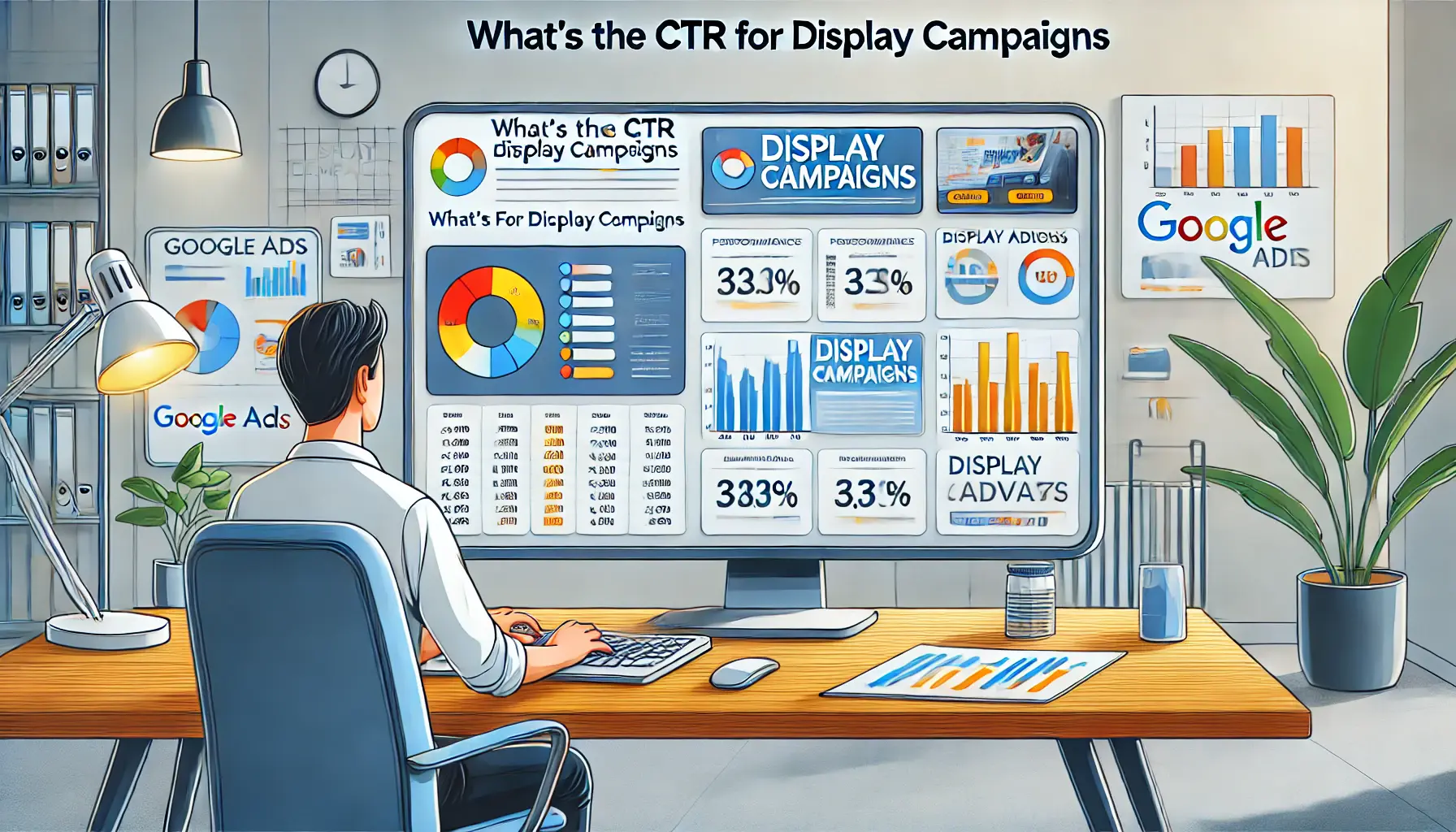
Visualization of click-through rate (CTR) metrics for display ad campaigns in Google Ads.
What’s a Good CTR for Display Campaigns
The CTR in display campaigns is usually lower because these ad types target passive audiences through websites or apps.
Users are not actively searching for information, so engagement levels are generally lower.
A good CTR for display campaigns typically ranges from 0.5% to 1%.
- Use visually appealing creatives to capture attention.
- Leverage remarketing to target users who have previously engaged with your brand.
- Employ precise audience targeting to ensure relevance.
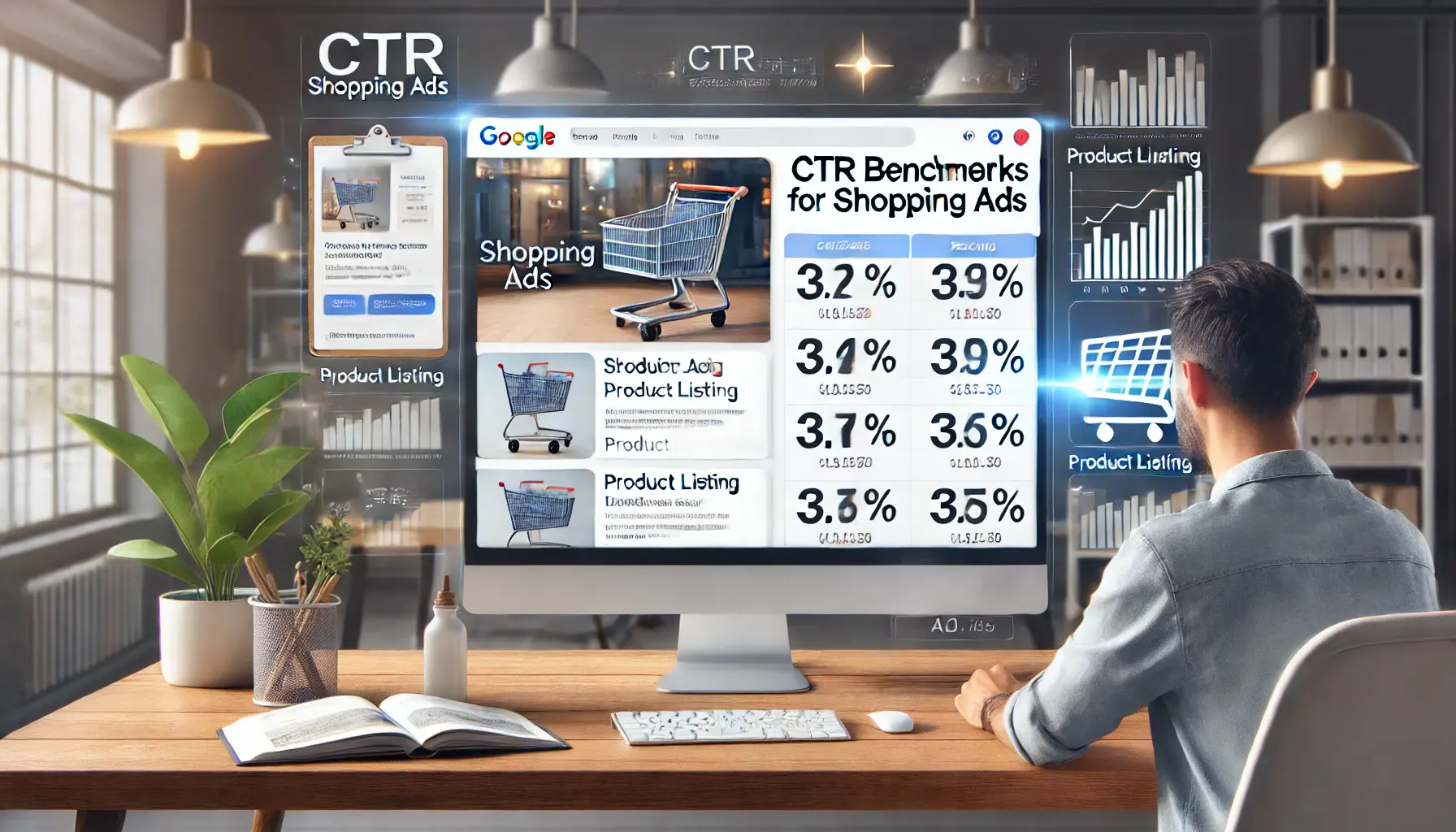
Visualization of click-through rate (CTR) benchmarks for shopping ads in Google Ads.
CTR Benchmarks for Shopping Ads
Shopping ads are designed for e-commerce businesses and often see higher CTRs than display campaigns but lower than search campaigns.
A good CTR for shopping ads generally falls between 1% and 2%.
These ads include product images, prices, and reviews, making them highly informative for users.
- Use high-quality product images that accurately represent the item.
- Optimize product titles and descriptions with relevant keywords.
- Offer competitive pricing to attract clicks.
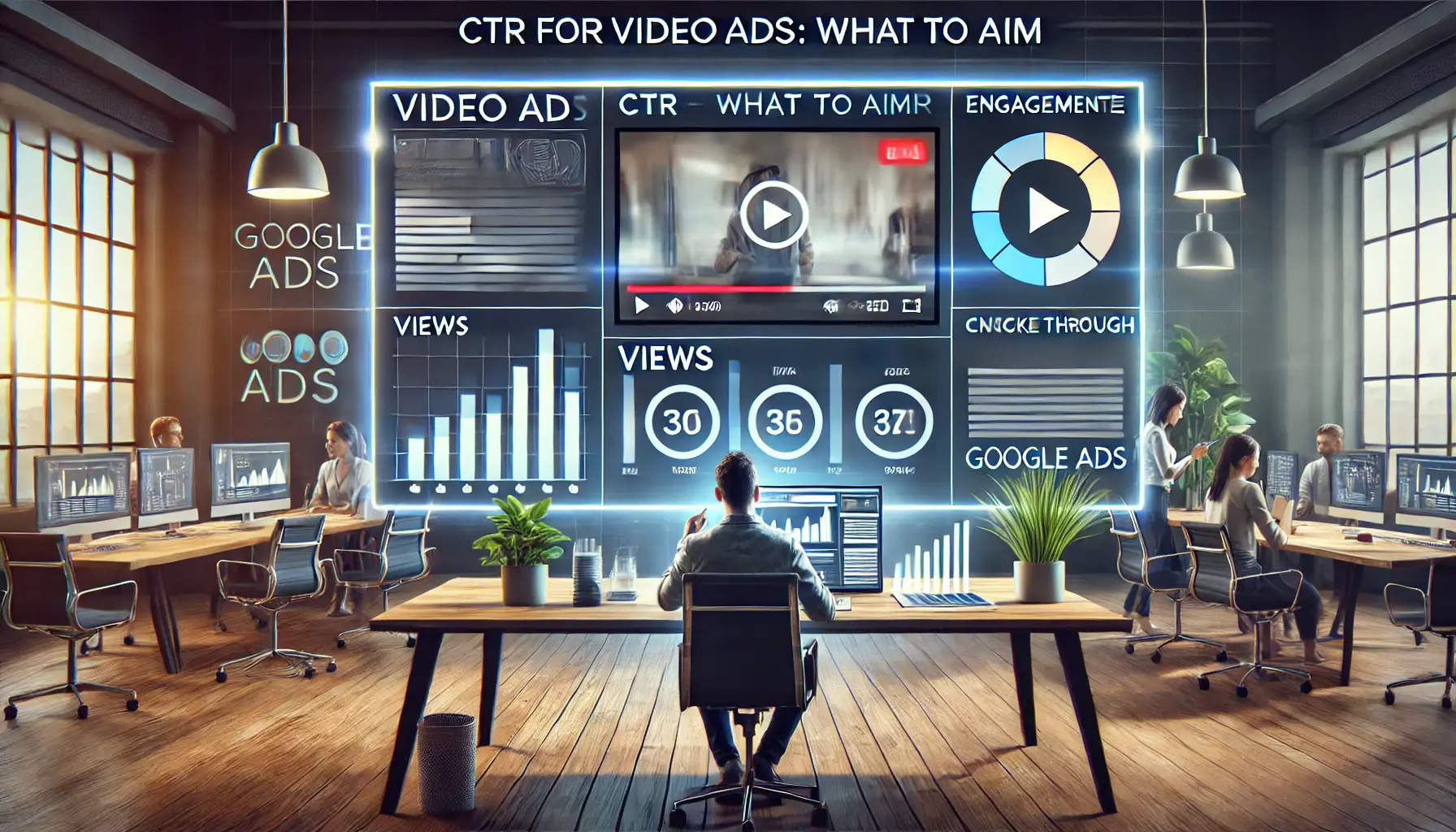
Visualization of click-through rate (CTR) benchmarks and performance metrics for video ads in Google Ads.
CTR for Video Ads: What to Aim For
Video ads on platforms like YouTube tend to have varying CTRs based on the ad format.
Skippable ads, for example, often see CTRs ranging from 0.5% to 1%, while non-skippable ads might achieve slightly higher rates due to guaranteed views.
A good CTR for video ads depends heavily on the creative and targeting strategy.
- Create engaging and emotionally resonant videos to capture attention.
- Use YouTube’s targeting options to reach specific audience segments.
- Include a strong call-to-action at the end of the video.

Representation of how different marketing goals influence what is considered a ‘good’ performance in Google Ads.
How Goals Influence What is ‘Good’
It’s important to note that what constitutes a good CTR can also depend on your campaign goals.
For example, a brand awareness campaign might prioritize reach over CTR, while a performance-driven campaign might aim for the highest possible CTR.
Tailor your expectations based on the objectives you’re trying to achieve.
- Align CTR benchmarks with your specific campaign goals.
- Continuously monitor and adjust strategies to improve CTR.
- Experiment with different campaign types to determine what works best for your business.
By knowing what a good CTR is for each type of campaign, you can devise more effective strategies and improve the performance of your Google Ads campaigns.
Keep testing and refining your approach to stay ahead of the competition and maximize your ROI.
- Search Campaigns: 3-5% CTR is ideal.
- Display Campaigns: Typically 0.5-1% CTR.
- Shopping and Video Ads: CTR benchmarks depend on audience engagement and format.
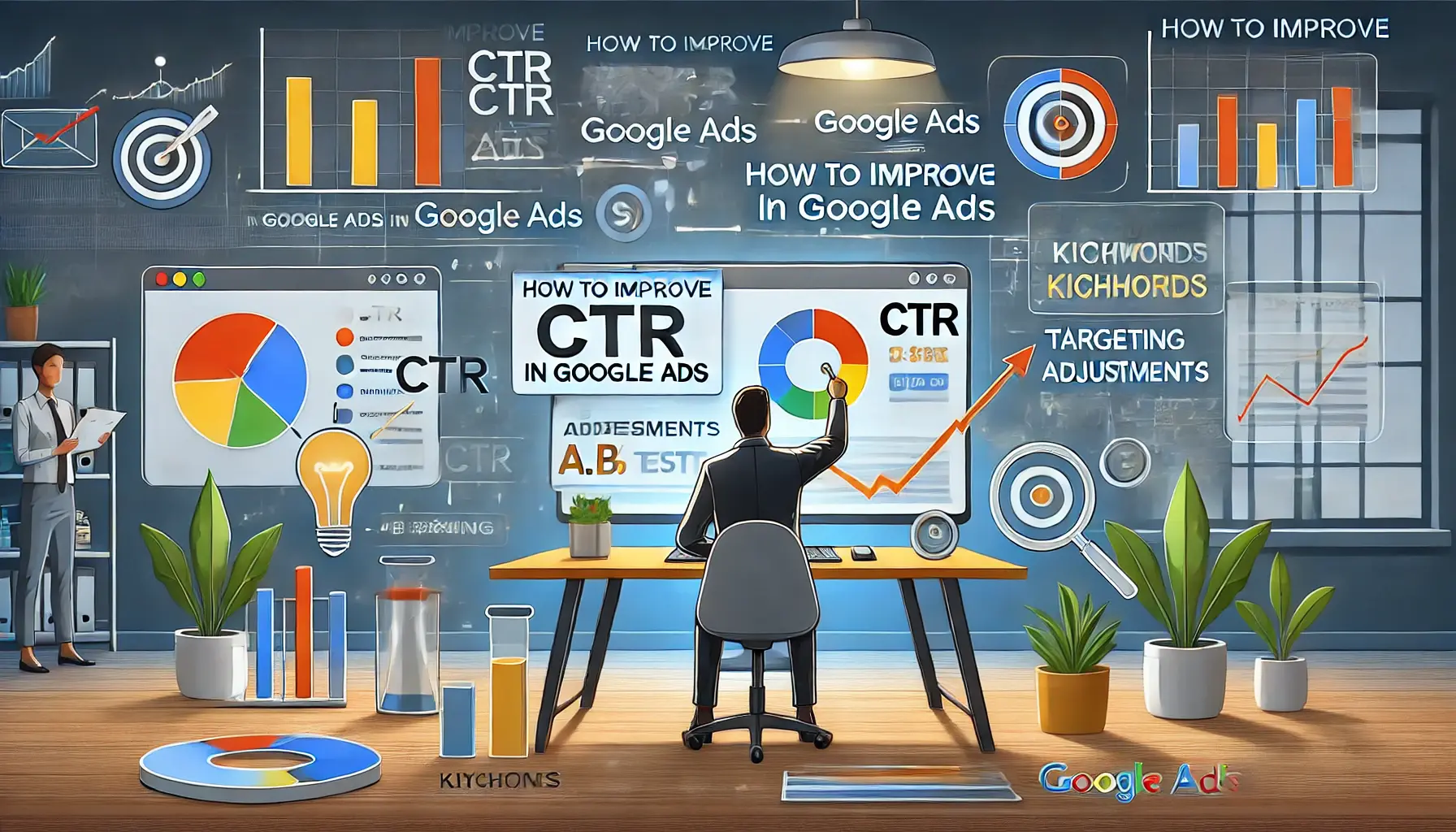
Illustration of strategies to improve click-through rates (CTR) in Google Ads campaigns.
How to Improve CTR in Google Ads
Improving your click-through rate (CTR) in Google Ads requires a combination of strategic planning, creative execution, and consistent optimization.
A higher CTR not only boosts your ad’s performance but also positively impacts your Quality Score, leading to better ad placements and lower costs.
Below, we’ll explore actionable strategies to help you achieve a good CTR in your campaigns.

Visualization of the creative process behind crafting compelling ad copy for Google Ads.
Crafting Compelling Ad Copy
Your ad copy is the first impression users have of your business, so it needs to be engaging and relevant.
A well-crafted ad attracts attention and effectively communicates the value of your offering.
- Include power words and action-oriented language to evoke curiosity and urgency.
- Highlight your unique selling points (USPs) to differentiate from competitors.
- Include a strong and clear call-to-action (CTA) that encourages users to click.
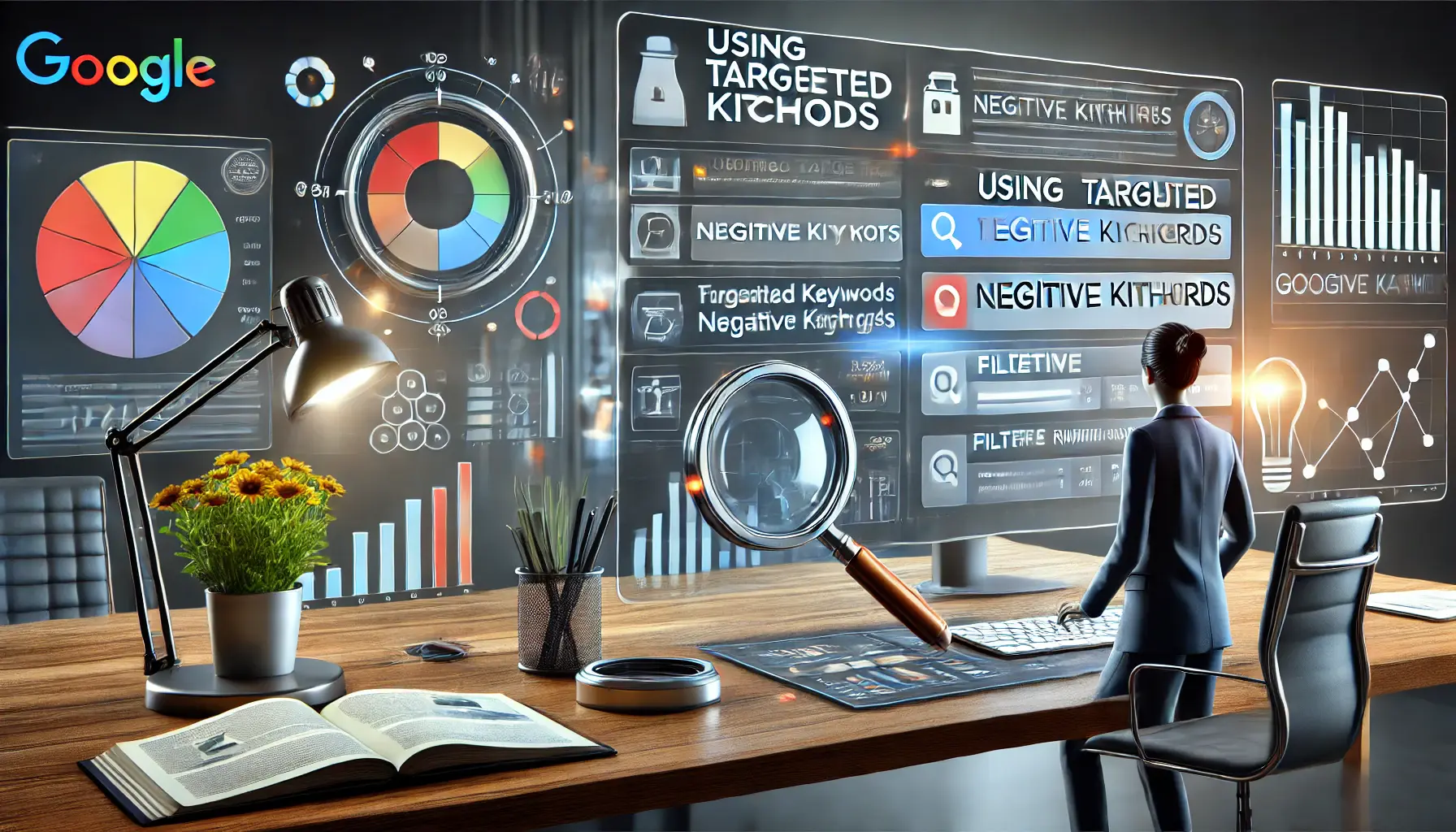
Illustration of keyword optimization using targeted and negative keywords in Google Ads campaigns.
Using Targeted Keywords and Negative Keywords
Keywords are the foundation of your Google Ads campaigns.
By targeting the right keywords and using negative keywordsKeywords that prevent an ad from showing for specific search queries. to filter out irrelevant traffic, you can significantly improve CTR.
- Conduct thorough keyword research to identify high-performing, relevant terms.
- Group similar keywords together to create highly targeted ad groups.
- Regularly update your negative keyword list to exclude irrelevant search terms.

Visualization of A/B testing results for ad variations in Google Ads campaigns.
A/B Testing Ad Variations
A/B testing involves running different versions of your ads to determine which performs best.
This method helps you refine your messaging and design for maximum engagement.
- Test different headlines, descriptions, and CTAs to identify the most effective combination.
- Experiment with various ad formats, such as responsive search ads or image extensions.
- Use data from the tests to optimize underperforming ads.
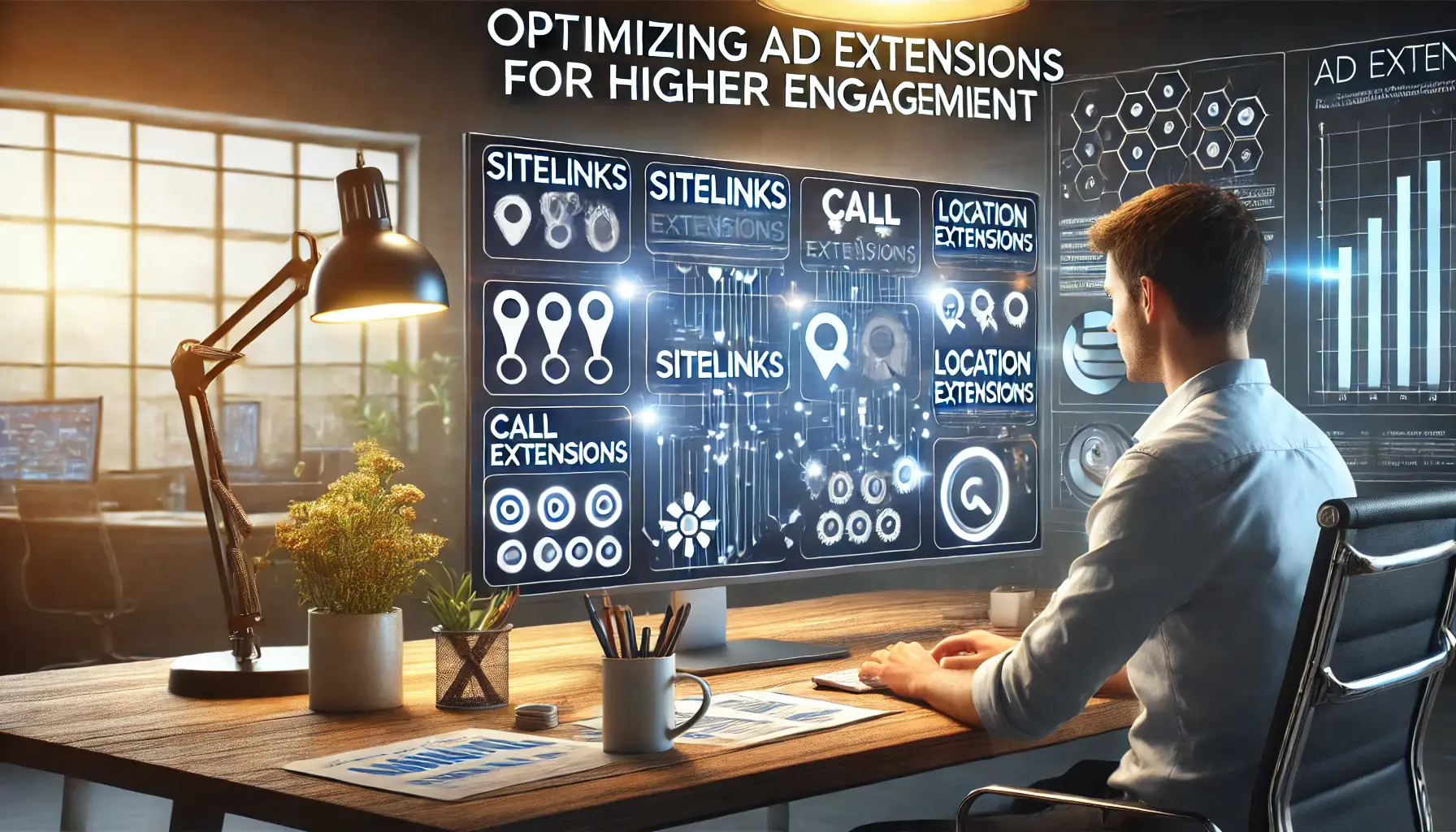
Illustration of optimizing ad extensions to boost engagement in Google Ads campaigns.
Optimizing Ad Extensions for Higher Engagement
Ad extensions provide additional information about your business and enhance the visibility of your ads, increasing the likelihood of clicks.
- Add sitelink extensions to direct users to specific pages on your website.
- Use call extensions to make it easier for mobile users to contact you directly.
- Leverage location extensions to attract local customers to your business.

Illustration of audience segmentation strategies in Google Ads to optimize targeting and engagement.
Leveraging Audience Segmentation
Understanding your target audience and catering to their needs can significantly enhance CTR.
Audience segmentation allows you to deliver the most relevant advertisements to specific groups of users.
- Segment audiences based on demographics, interests, and online behavior.
- Create remarketing lists to re-engage users who previously interacted with your website or ads.
- Use in-market audiences to target users actively searching for products or services like yours.
Optimizing CTR in Google Ads is a continuous process that requires constant analysis and updates.
By adopting these strategies, you can create more eye-catching ads, reach the right audience, and achieve better campaign performance.
Remember, even the smallest improvements in CTR can lead to significant returns on investment.
- Write compelling ad copy with strong CTAs.
- Use targeted and negative keywords to refine audience reach.
- Leverage ad extensions and A/B testing to enhance engagement.
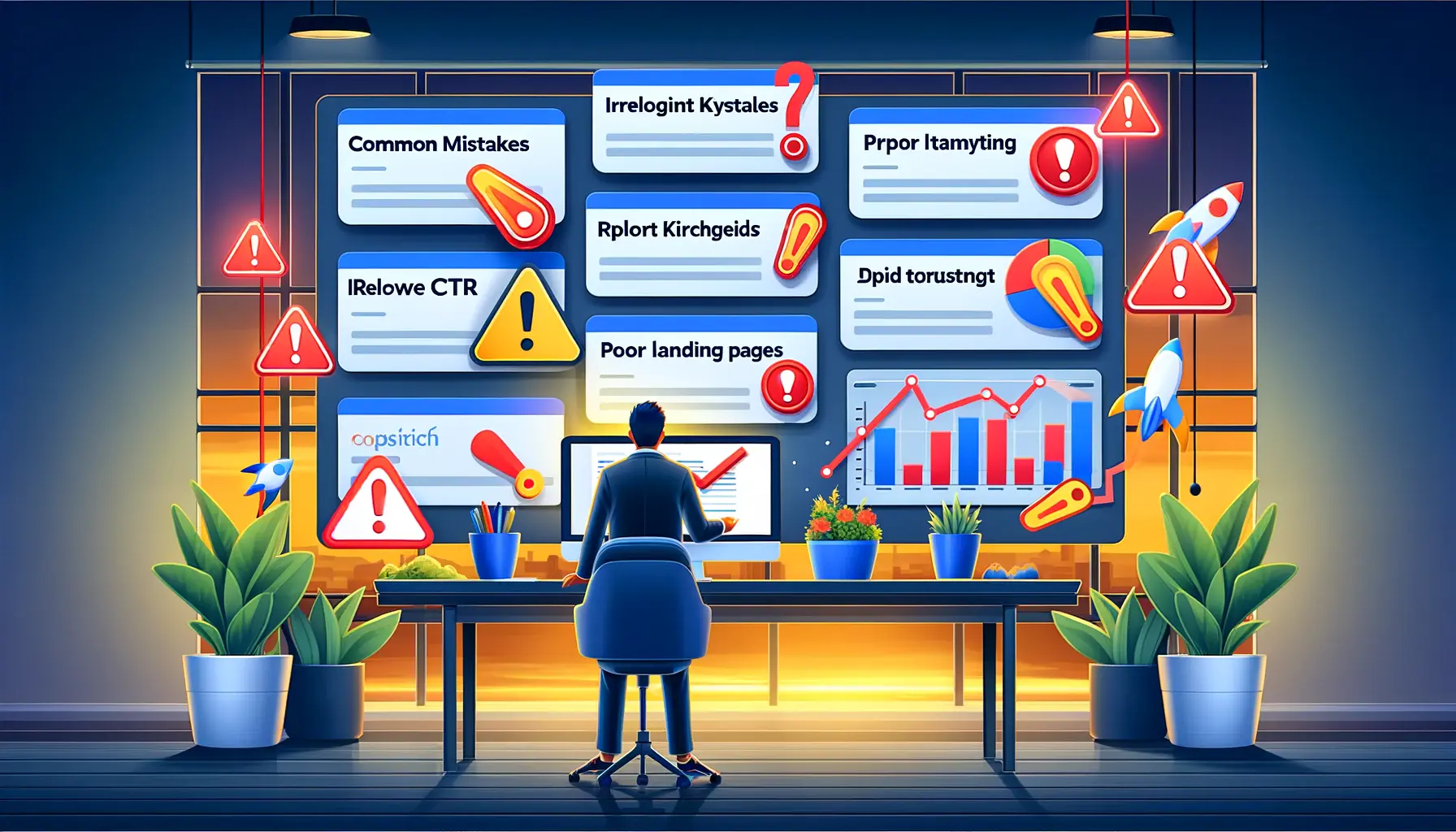
Visualization of common mistakes that impact CTR, such as poor targeting and irrelevant keywords, with optimization efforts.
Common Mistakes That Lower CTR and How to Avoid Them
Achieving a good CTR in Google Ads can be challenging, especially if common mistakes are left unaddressed.
These errors can not only lower your CTR but also increase your costs and reduce the effectiveness of your campaigns.
Identifying and avoiding these pitfalls is crucial for running successful campaigns.
Let’s explore the common mistakes that impact CTR and how you can steer clear of them.
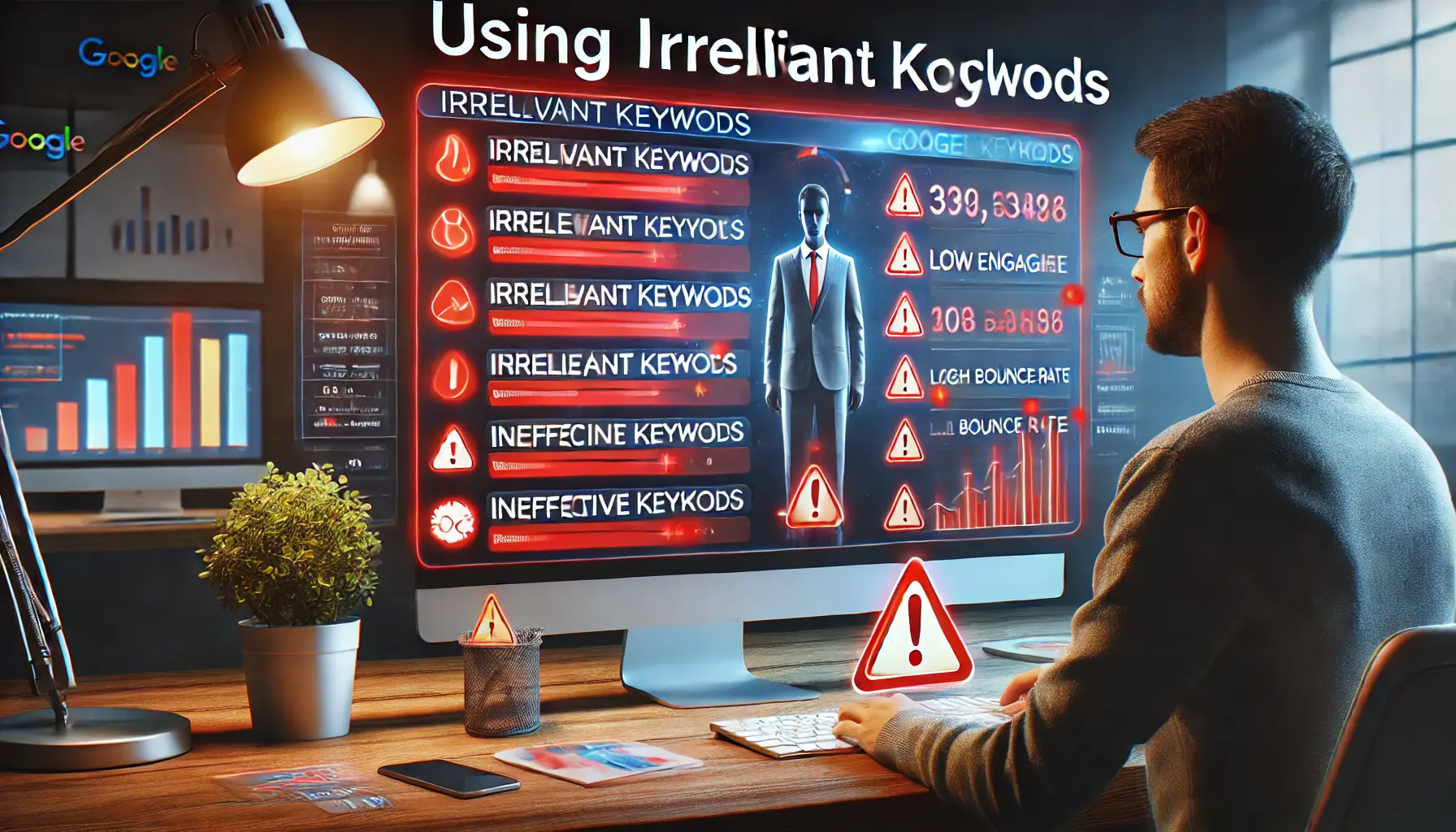
Visualization of the negative impact of using irrelevant keywords in Google Ads campaigns.
Using Irrelevant Keywords
Keywords that do not align with user intent or your ad copy can result in irrelevant traffic and lower CTR.
Broad match keywords, if not properly refined, may trigger your ad for unrelated search queries.
- Conduct regular keyword audits to remove underperforming and irrelevant terms.
- Utilize negative keywords to exclude irrelevant traffic.
- Focus on long-tail keywords that are highly relevant to your offerings.

Illustration of the issues caused by poorly designed landing pages in digital marketing.
Poorly Designed Landing Pages
Your landing page is critical in converting clicks into actions.
A mismatch between the ad copy and landing page content can erode user trust and discourage clicks over time.
- Ensure the landing page content matches the promises made in the ad.
- Optimize the page for mobile users and ensure fast loading speeds.
- Use clear headlines and visually appealing designs to engage visitors.

Visualization of the negative impact of ignoring negative keywords in Google Ads campaigns.
Ignoring Negative Keywords
Neglecting to use negative keywords can lead to wasted ad spend and lower CTR.
Ads may appear for irrelevant searches, resulting in clicks from users who are unlikely to convert.
- Regularly update your negative keyword list to refine targeting.
- Analyze search term reports to identify irrelevant queries.
- Exclude terms that are too broad or unrelated to your campaign goals.

Visualization of the consequences of overlooking mobile optimization in Google Ads campaigns.
Overlooking Mobile Optimization
With a significant percentage of users browsing on mobile devices, failing to optimize ads and landing pages for mobile can hurt CTR.
- Use responsive ad designs that adapt to different screen sizes.
- Ensure mobile-friendly landing pages with fast load times.
- Incorporate call extensions for easy access to your business on mobile.

Visualization of the importance of updating underperforming ads to improve performance in Google Ads.
Failing to Update Underperforming Ads
Outdated or poorly performing ads hurt CTR and the effectiveness of a campaign.
Ads that are off-target to your ideal audience won’t deliver responses from that target audience.
- Routinely review ad performance metrics to identify areas that require optimization.
- Continuously refresh ad copy, headlines, and creatives.
- Use A/B testing to uncover a significantly better version.
Avoiding these common pitfalls will surely improve your CTR and help you get the most out of your Google Ads campaigns.
Constant monitoring and optimization, together with staying updated about the best practices, will always help you run high-performing campaigns.
- Using irrelevant keywords can harm CTR.
- Neglecting mobile optimization reduces engagement.
- Failing to update ads regularly leads to poor performance.
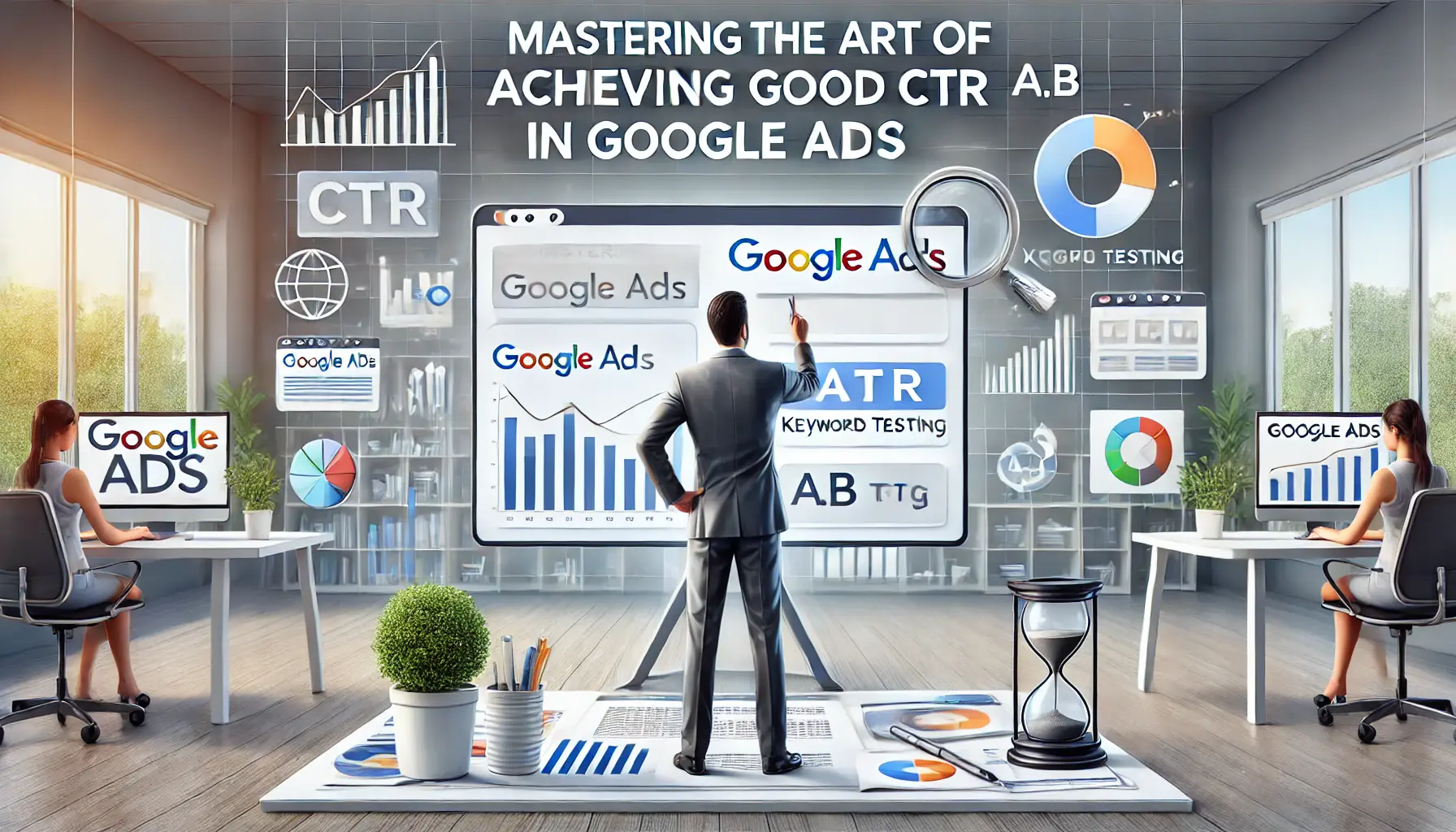
Visualization of a refined approach to achieving a good CTR in Google Ads campaigns through strategic optimization.
Mastering the Art of Achieving a Good CTR in Google Ads
A good click-through rate (CTR) is one of the most crucial factors for success in Google Ads.
It serves as a direct indicator of how well your ads engage with your audience and contributes significantly to your campaign’s overall performance.
Understanding and optimizing for a good CTR ensures better ad placements, lower costs, and higher returns on investment.

Visualization of summarizing key takeaways and strategic decisions from Google Ads campaign results.
Key Takeaways from the Article
Throughout this article, we’ve explored various aspects of achieving a good CTR in Google Ads.
Here’s a recap of the most important insights:
- CTR varies across campaign types. While search campaigns generally achieve a higher CTR (3%-5%), display campaigns typically have lower benchmarks (0.5%-1%). Understanding these benchmarks is critical for setting realistic expectations.
- Effective CTR optimization relies on crafting compelling ad copy, leveraging targeted keywords, and continuously refining negative keyword lists.
- Ad extensions, A/B testing, and audience segmentation are powerful tools for improving CTR and engaging with the right audience.
- Common mistakes, such as using irrelevant keywords, neglecting mobile optimization, and failing to update underperforming ads, can significantly lower CTR if not addressed.
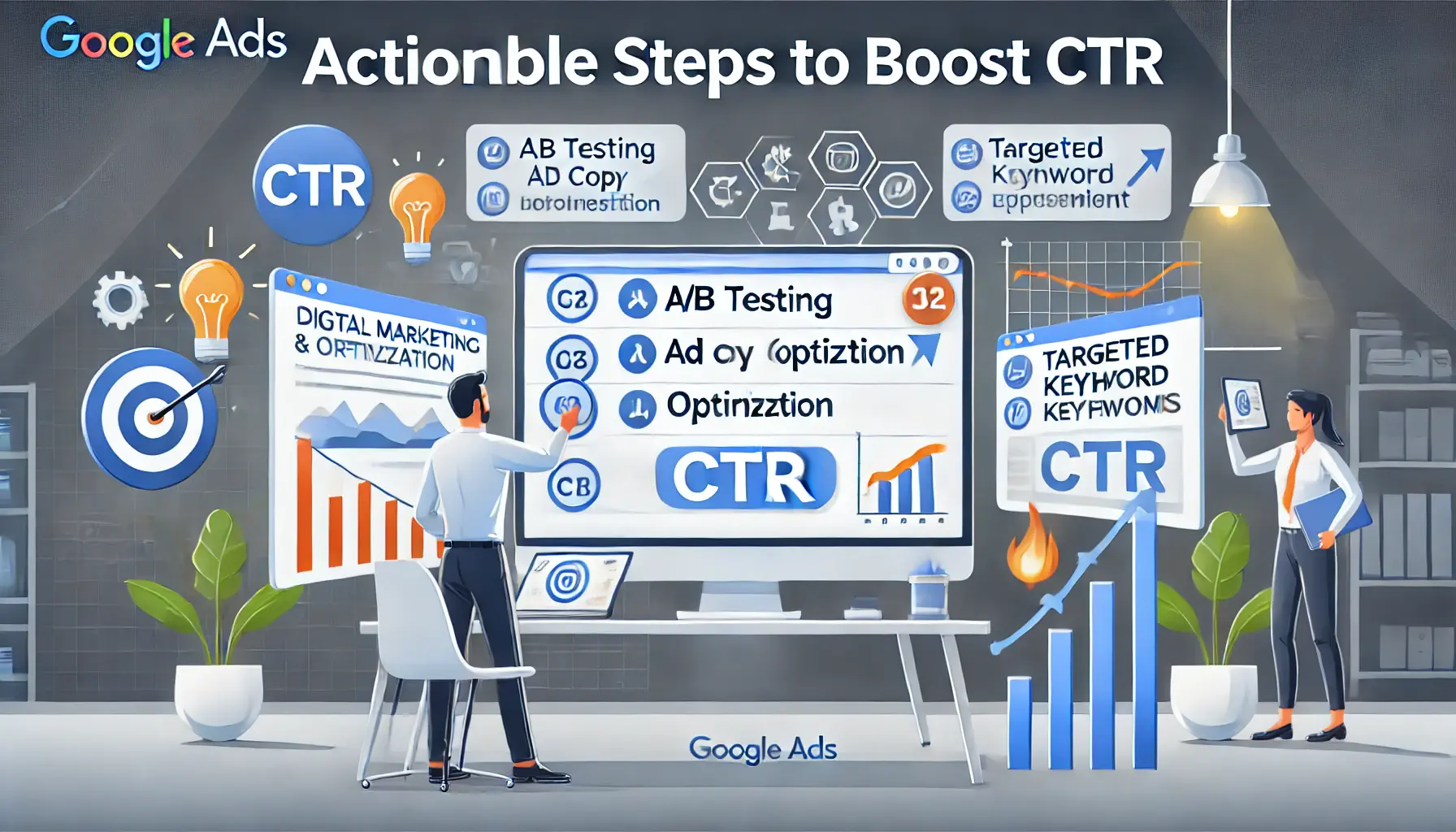
Visualization of actionable steps to boost CTR through optimization strategies in Google Ads campaigns.
Actionable Steps to Boost CTR
Some of the actionable ways to enhance CTR in your Google Ads campaigns include:
- Regularly check ad performance metrics to identify areas for improvement.
- Work on an optimal keyword strategy, including utilizing long-tail keywords and refining negative keywords.
- Enhance ad copy by incorporating strong CTAs and emphasizing your unique selling points (USPs).
- Leverage features like A/B testing and ad extensions to maximize engagement.
- Ensure seamless mobile optimization for both ads and landing pages.
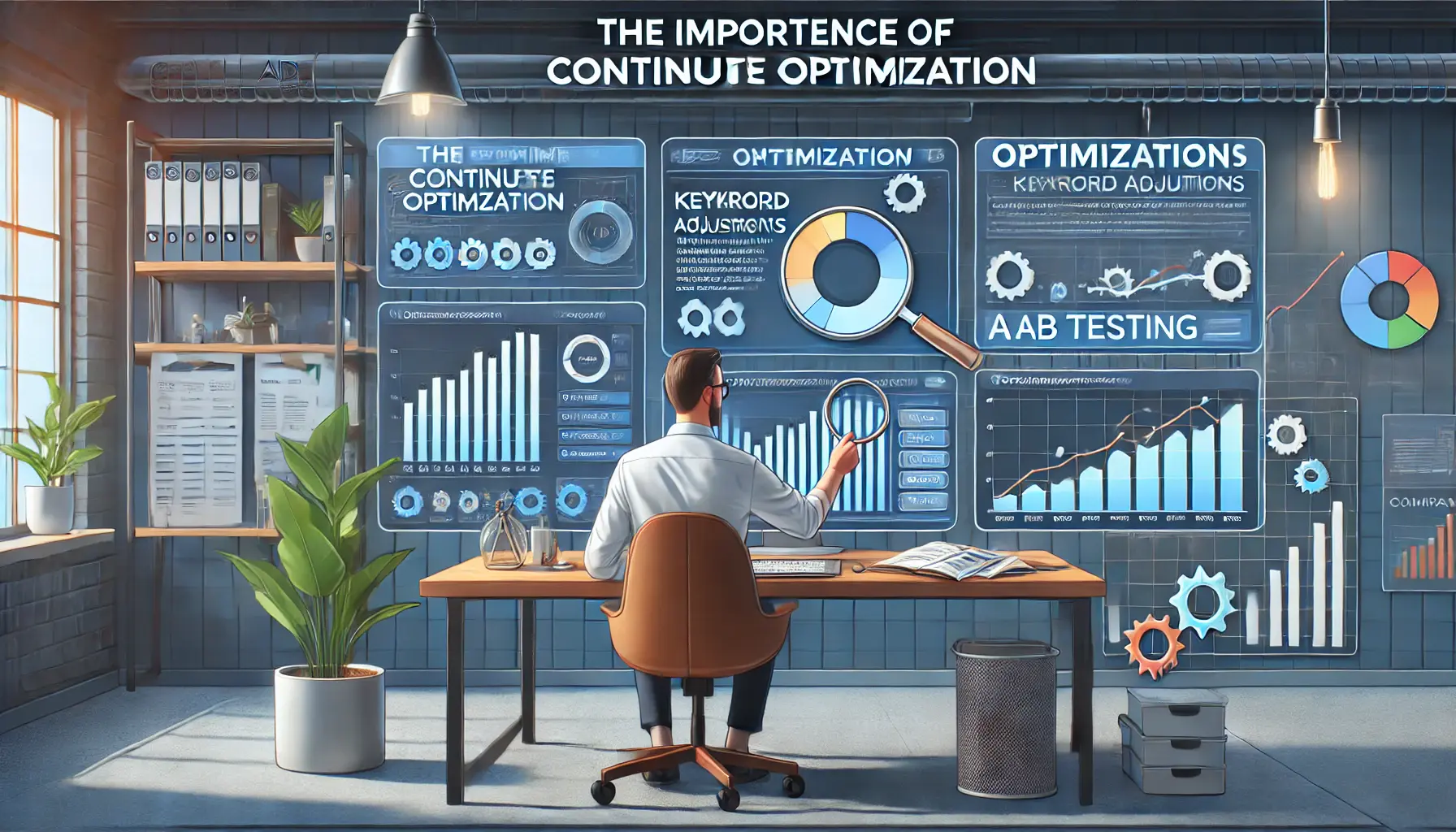
Visualization of the ongoing process of campaign optimization and performance monitoring in Google Ads.
The Importance of Continuous Optimization
CTR isn’t a one-time metric; it requires consistent monitoring and optimization to maintain high performance.
Google Ads is a dynamic platform, and staying up-to-date with new tools and features is essential for outpacing the competition.
By addressing common mistakes, refining strategies, and leveraging data-driven insights, you can achieve a good CTR and unlock the full potential of your Google Ads campaigns.
Even slight improvements in CTR can lead to significant results, making it an integral part of any digital marketing strategy.
With a clear understanding of what constitutes a good CTR and actionable strategies to achieve it, you’re now equipped to optimize your campaigns for success.
Remember, the journey to better CTRs is ongoing—embrace the process and strive for continuous growth in your advertising efforts.
CTR optimization is an ongoing process. Regularly refine strategies, monitor performance, and stay updated to achieve sustained success in Google Ads.
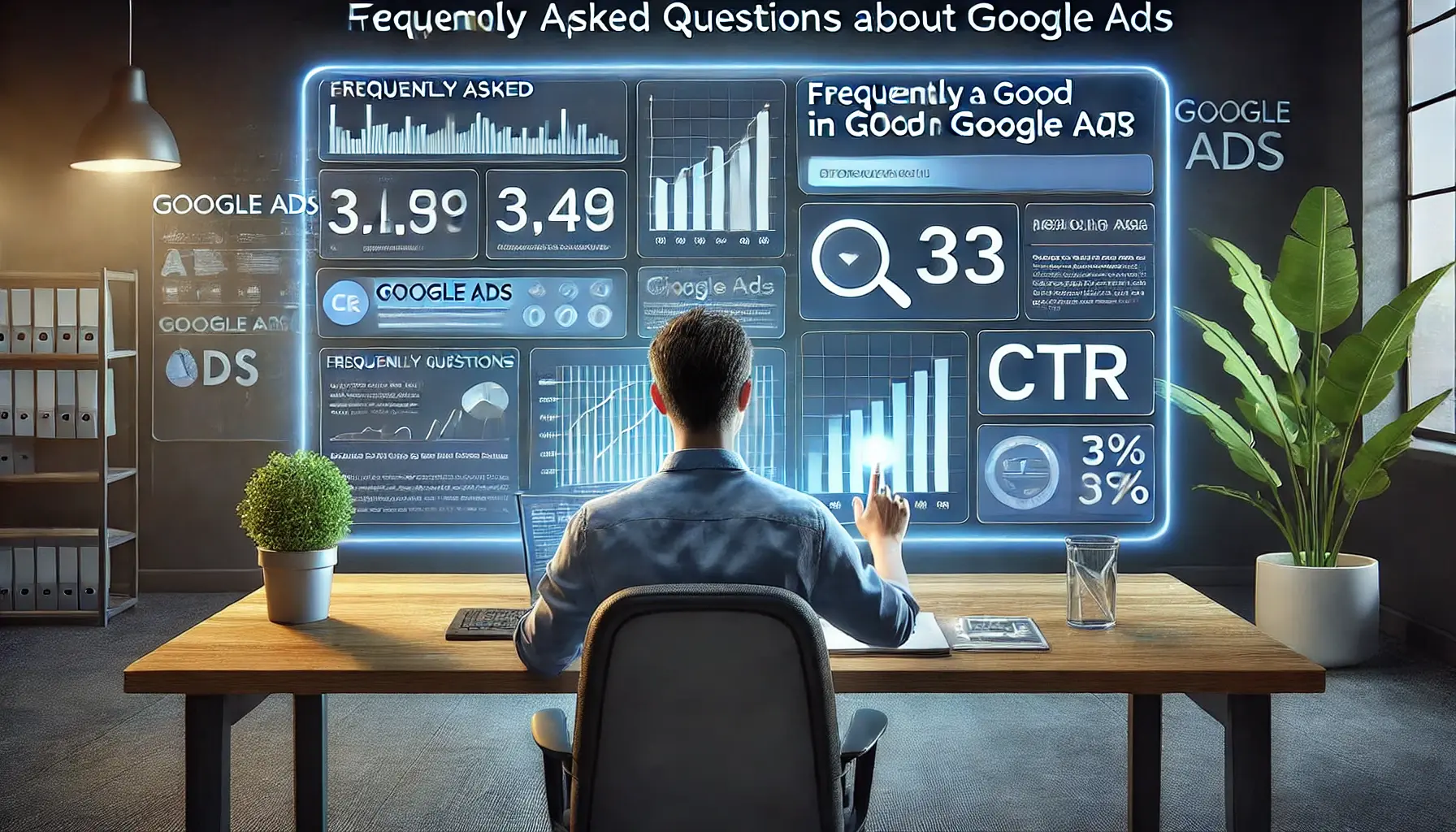
Visualization of a digital marketer analyzing Google Ads performance metrics and answering common CTR-related questions.
Your campaigns can be managed by an agency specialized in Google Ads, check out our service page.
Frequently Asked Questions About a Good CTR in Google Ads
Here are a few of the most commonly asked questions about how to achieve and maintain a good CTR in Google Ads.
These answers provide concise and practical insights to enhance your campaigns and make you more knowledgeable.
A good CTR depends on the type of campaign.
For search campaigns, 3%-5% is ideal, while display campaigns usually stand at 0.5%-1%.
Benchmarks may vary depending on industry and competition.
CTR directly impacts Quality Score, influencing ad rank and cost-per-click (CPCCost-per-click, the amount charged to an advertiser each time their ad is clicked.).
A high CTR indicates relevance to Google, leading to better ad placements and lower costs for advertisers.
CTR is influenced by ad copy quality, keyword relevance, landing page experience, audience targeting, and the use of ad extensions.
Addressing these factors can significantly boost CTR.
Improve CTR by crafting compelling ad copy, using targeted and negative keywords, optimizing ad extensions, conducting A/B testing, and ensuring mobile-friendly landing pages that align with your ad content.
Common mistakes include using irrelevant keywords, neglecting negative keywords, poor landing page design, ignoring mobile optimization, and failing to update underperforming ads regularly.
Addressing these issues can help maintain a high CTR.
Yes, CTR differs by campaign type.
Search campaigns often have higher CTRs than display or video campaigns because they target users actively searching for specific information or products.
Since most users browse on mobile devices, it is important that your ads and landing page are mobile-friendly.
Responsive designs and fast load times improve user experience and contribute to higher CTRs.
Negative keywords help filter out irrelevant traffic, ensuring your ads reach a more targeted audience.
This improves ad relevance and engagement, leading to a better CTR and reduced wasted ad spend.
Review and update your ads regularly, at least monthly or whenever performance declines.
Refresh ad copy, headlines, and creatives to maintain relevance and engagement with your audience.



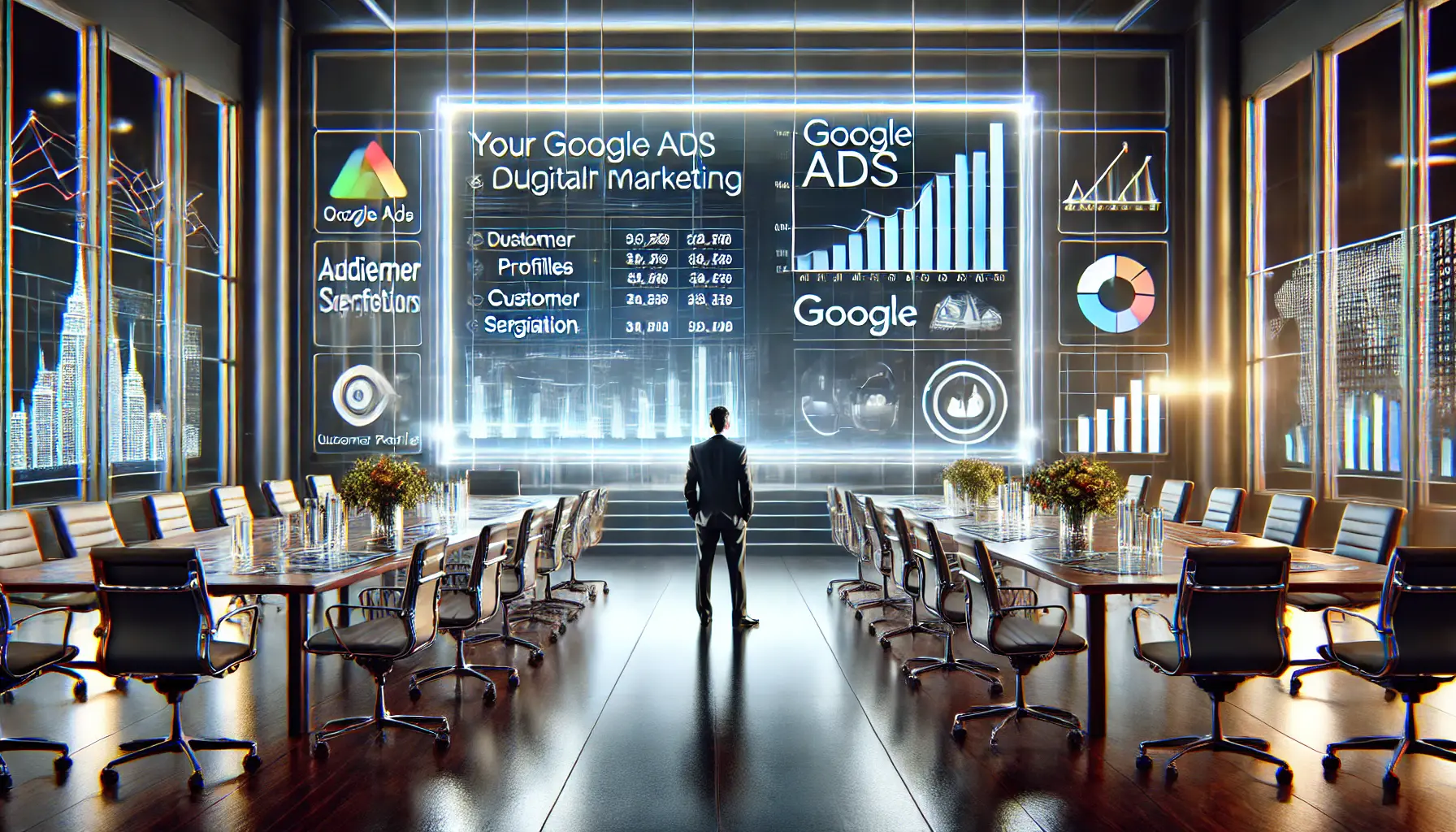









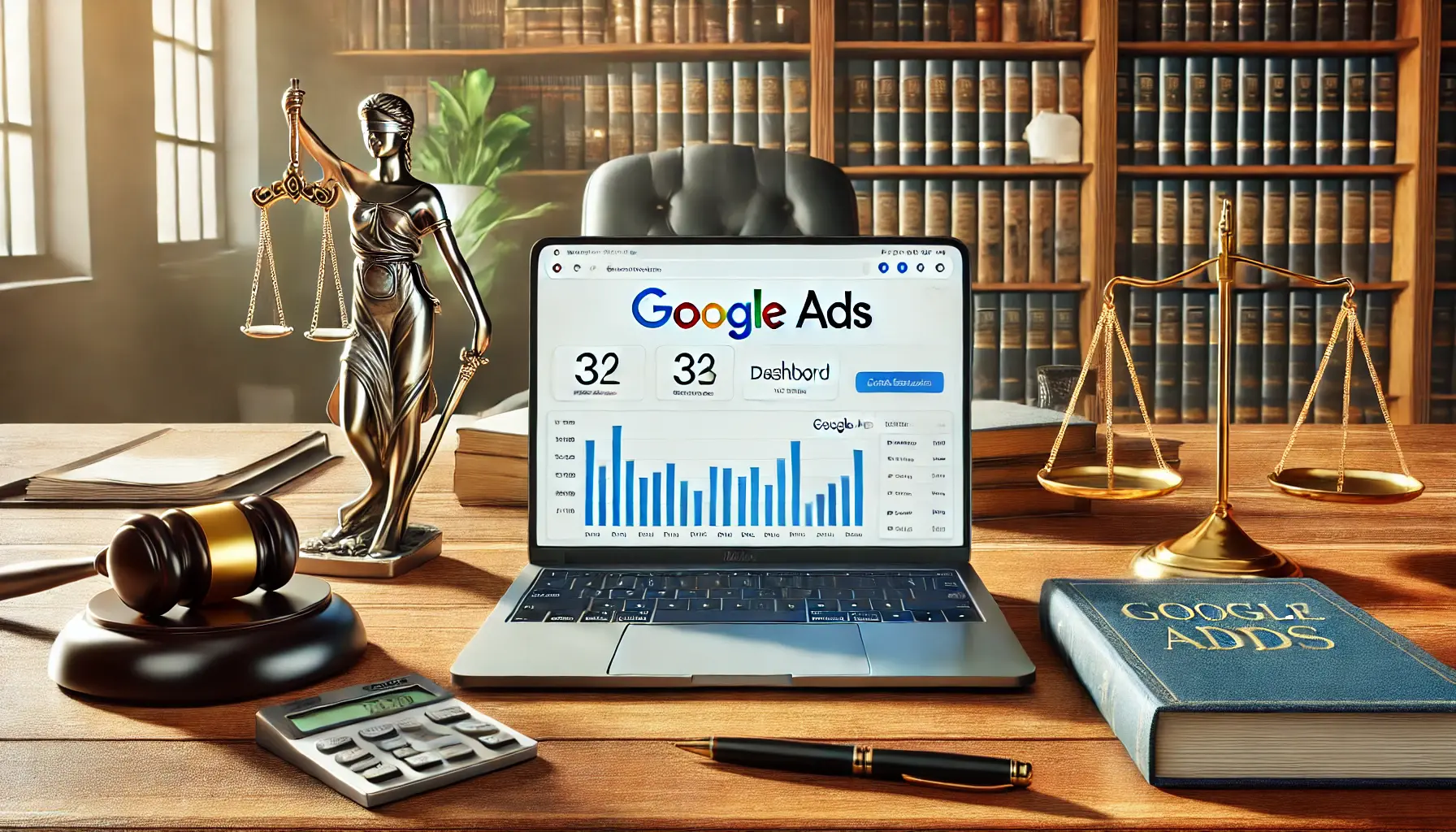
Your writing is a symphony of intellect, with each sentence playing a unique note in the grand composition of your ideas. The harmonious blend of clarity and complexity creates a reading experience that is both symmetrical and avant-garde.